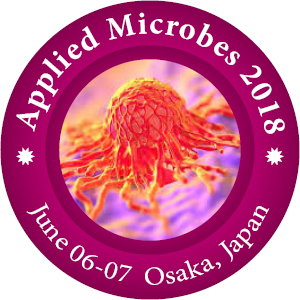Novaria Sari Dewi Panjaitan
Tzu-Chi University, Taiwan
Title: A Novel Phosphotransferase System Enzyme-IIA Homologue Inhibits 1,3-Propanediol Production through Binding to Glycerol Kinase in Klebsiella pneumoniae
Biography
Biography: Novaria Sari Dewi Panjaitan
Abstract
1,3-propanediol (1,3-PD) recently has been used in various industry field, such as the synthesis of biodegradable polyesters, polyurethanes and polyethers. Besides the chemical methods, 1,3-PD can be produced through fermentation processes of glycerol in certain bacteria, including Klebsiella pneumoniae. Glycerol is metabolized fermentatively through two kind parallel pathways: the reductive and oxidative pathways. The oxidative pathway leads to the production of DHAP, while the reductive pathways leads to 1,3-PD production. Aerobically, glycerol could be uptaken into bacterial cell through either direct diffusion or glycerol facilitator protein (GlpF), then will be phosphorylated by glycerol kinase (GlpK) to become glycerol-3-P (G3P), for being further metabolized. In Enterobacteriaceae, phosphotransferase system (PTS) protein Enzyme-IIAGlc (also called Crr, for catabolite repression resistance) was found to be the central regulator of carbon metabolism. Unphosphorylated Crr protein can bind to GlpK to inhibit its function. In our study we found that KPN00353, a novel KpEIIA, could inhibit 1,3-PD production in Klebsiella pneumoniae by direct binding to GlpK. Based on the protein-protein interaction site prediction, amino acid residue Histidine-65 (His-65) is predicted to be the important residue for KpGlpK-KPN00353 binding. We then mutated this histidine residue to aspartate (H65D), glutamate (H65E), arginine (H65R), and glutamine (H65Q) in order to reveal the importance of His-65 residue of KPN00353 in its interaction with KpGlpK. We found that the mutated H65Q of KPN00353 has the weaker binding to KpGlpK compared to wild type KPN00353, while other mutations cause the stronger binding of KPN00353 and KpGlpK. Furthermore, we found that the stronger the binding of KPN00353 and KpGlpK, the lower the production of G3P and 1,3-PD in Klebsiella pneumoniae.

